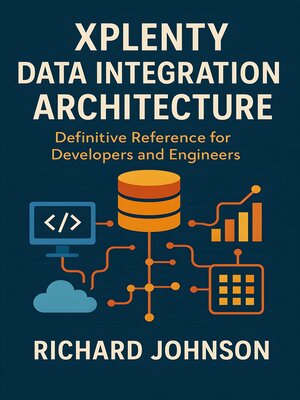Xplenty Data Integration Architecture
ebook ∣ Definitive Reference for Developers and Engineers
By Richard Johnson

Sign up to save your library
With an OverDrive account, you can save your favorite libraries for at-a-glance information about availability. Find out more about OverDrive accounts.
Find this title in Libby, the library reading app by OverDrive.



Search for a digital library with this title
Title found at these libraries:
| Library Name | Distance |
|---|---|
| Loading... |
"Xplenty Data Integration Architecture"
"Xplenty Data Integration Architecture" offers a comprehensive and authoritative exploration of the Xplenty platform, setting the stage with a critical examination of modern data integration strategies and Xplenty's evolving role in this dynamic landscape. The book expertly traces the transition from traditional ETL practices to contemporary cloud-native integration frameworks, providing valuable architectural insights and business context. Through in-depth comparisons with leading competitors, it elucidates Xplenty's unique strengths in scalability, extensibility, and seamless integration, further illustrated by real-world use cases and industry applications.
Diving deeply into the technical architecture, the text meticulously unpacks both the logical and physical constructs of Xplenty. Readers gain a thorough understanding of data and control flows, deployment models, cluster management, and the platform's powerful orchestration engine. Key architectural attributes such as connector frameworks, pipeline modularity, organizational multi-tenancy, and observability are examined alongside advanced topics including parallelism, change data capture, data lineage, and quality assurance. Each concept is grounded in practical advice for designing maintainable, high-performance, and secure data workflows across increasingly complex ecosystems.
The book's scope extends to the enterprise-wide challenges of integrating a multitude of data sources and destinations—ranging from relational and NoSQL databases to cloud platforms, event streams, SaaS APIs, and edge devices. Readers are guided through best practices for security, compliance, and governance, with special attention to encryption, auditing, data masking, and regulatory requirements. Emphasizing operational excellence, the work addresses cost optimization, CI/CD automation, and robust DevOps strategies. Finally, it anticipates the future of data integration, spotlighting trends in serverless computing, machine learning, hybrid/multi-cloud design, IoT, real-time streaming, and API-driven innovation, making it an essential resource for data engineers, architects, and technology leaders.







